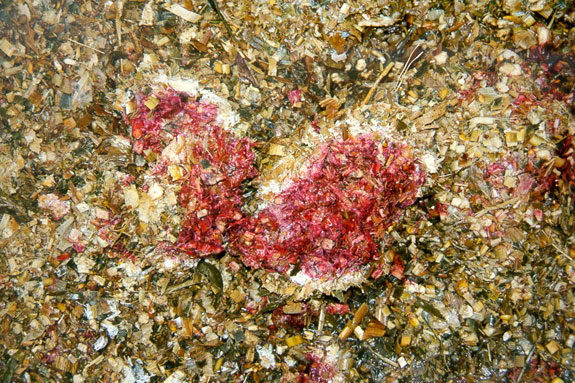Growers need to understand which molds are harmful and how their development in crops can be limited.
Mold growth varies depending on type. Some types proliferate while the crop is growing in the field, while others propagate during storage.
- Field molds are an issue with cereal grain crops, therefore in corn, for example, Gibberella, Aspergillus and Fusarium ear rots are responsible for producing a range of mycotoxins, including vomitoxin, zearalenone, T-2, fumonisin and aflatoxin.
- Storage molds originate from soilborne spores that are brought into the silo with all forages.
Because the types require different conditions to grow, field molds typically don’t propagate in silos and storage molds usually don’t develop while the crop is in the field. Mold growth also varies depending on environmental conditions, however, and under extreme conditions, such as low harvest moisture, poor initial packing or improper feed-out techniques, it’s possible for the field fungi to produce additional toxins in the storage structure.
 Storage molds require oxygen from air for molds to sporulate and begin growing in silages. Usually storage mold growth occurs when pH is greater than 4.5, which is a result of yeast activity that can occur at low pH in the presence of oxygen and causes pH to rise above 4.5.
Storage molds require oxygen from air for molds to sporulate and begin growing in silages. Usually storage mold growth occurs when pH is greater than 4.5, which is a result of yeast activity that can occur at low pH in the presence of oxygen and causes pH to rise above 4.5.
One exception is Penicillium molds, which can grow in the presence of oxygen even at low pH levels, and likely is why it’s the most commonly isolated mold in silage samples.
Most molds identified in silages can result in lowered palatability and nutrient value. However, molds also can produce other mycotoxins that standard laboratory tests don’t look for.
The good news is that well-managed and preserved silages are not prone to become moldy. Therefore, an ultimate goal should always be to ensile forages using best management practices during filling, storage and feedout. This eliminates oxygen and maintains a pH environment of 4.0 or lower throughout the silo. Silage-specific molds and mycotoxins
Silage-specific molds and mycotoxins
Three most common molds isolated from silages include Penicillium roqueforti, Aspergillus fumigatus and Monascus ruber.
The easy way to differentiate is by color. P. roqueforti is green/blue, A. fumigatus is yellow/green and M. ruber appears red surrounded by white. Other spoilage molds include Mucor and Monila, which typically are white to grayish in color.
The primary feeding concerns related to storage molds are reduced silage nutritional quality, bunk life and palatability. While most molds do not produce harmful mycotoxins, research shows P. roqueforti is capable of producing several dangerous ones. This is a major concern because it can grow at low pH levels.
Among the mycotoxins produced by P. roqueforti that are harmful to cattle are PR toxin, patulin, citrinin, ochratoxin, mycophenolic acid and roquefortine C. The primary mycotoxin produced by A. fumigatus is gliotoxin. M. ruber usually does not present mycotoxin concerns, although researchers have isolated citrinin mycotoxin. In monogastrics such as pigs and chickens, this mycotoxin can produce liver and kidney problems.
A common toxic effect in cattle exposed to any storage-produced mycotoxins is a change in ruminal flora make-up, which alters rumen fermentation. Long-term feeding of moldy silages can produce local inflammatory responses that may lead to rumenitis. A ruminant’s other body systems also can be affected by storage mold mycotoxins if high concentrations enter into the blood system.
Several mycotoxins may cause neurological damage at high doses. However, this is a minor concern in cattle because they generally ingest fairly low doses of these mycotoxins.
Gliotoxin from A. fumigatus is of interest in dairy cattle because research shows correlations with cattle bronchitis, mastitis and incidental abortions. Gliotoxin in conjunction with Clostridial perfringens type A has been identified as a possible cause of hemorrhagic jejunal syndrome (HJS) in dairy cattle.
HJS is an acute disease in dairy cattle characterized by a sudden drop in milk production, abdominal pain due to obstructed bowels, and anemia. Death can come within 48 hours from the onset of the syndrome.
Veterinary toxicologists warn that the presence of A. fumigatus alone does not necessarily result in HJS events in dairy cattle. Many other factors come into play, including ration formulations and pre-existing sub-acute rumen acidosis events.
Veterinary and nutritional consultants usually are unaware of storage mycotoxins because very few laboratories screen to detect them. Some forage testing labs offer a commercialized, thin layer chromatography screen for PR; however, research hasn’t determined a threshold level of toxicity that affects rumen function. An alternative is to culture storage molds from spoiled silage and make an indirect inference about the likely presence of mycotoxins.
Prevention of storage molds and mycotoxins
To prevent mycotoxins from developing in silage, follow accepted production practices that preserve quality primarily by reducing the pH level and eliminating oxygen in the feed. Accepted silage-production practices include:
- Harvesting at the proper moisture content
- Chopping uniformly at the proper length
- Filling the silo rapidly
- Packing the silage sufficiently
- Covering the horizontal silo immediately, during or after filling
- Using an effective fermentation aid such as a combination of Lactobacillus plantarum and Lactobacillus buchneri inoculants
Silo size should be appropriate for the herd size to ensure daily removal of silage at a rate faster than deterioration can occur. In warm weather, it is best to remove a foot of silage daily from the feeding face of horizontal silos.
Cut the feeding face cleanly, and disturb it as little as possible to prevent aeration into the silage mass. Be careful not to remove excess plastic covering from the surface during silage feedout to minimize chances of top mold activity. Feed silage (or other wet feeds) immediately after removal from storage, do not feed spoilage, and clean feed bunks regularly.
Obviously, moldy feed should be avoided. Spoilage or deteriorated silage can reduce feed consumption, fiber digestibility and production. If unacceptably high levels of mycotoxins are present, producers often can dilute the feed with uncontaminated silage. If not, they should discard contaminated feed. FG
PHOTOS
Photo 1: These images show different species of mold that can attack silage. Top one is monascus ruber.
Photo 2: Aspergillus fumigatus.
Photo 3: Mucor mold. Photos courtesy of Bill Seglar. 
Bill Seglar, DVM
Senior Nutritionist
DuPont Pioneer










